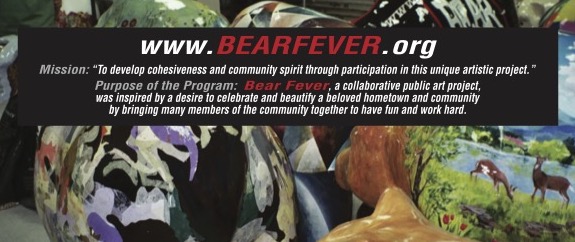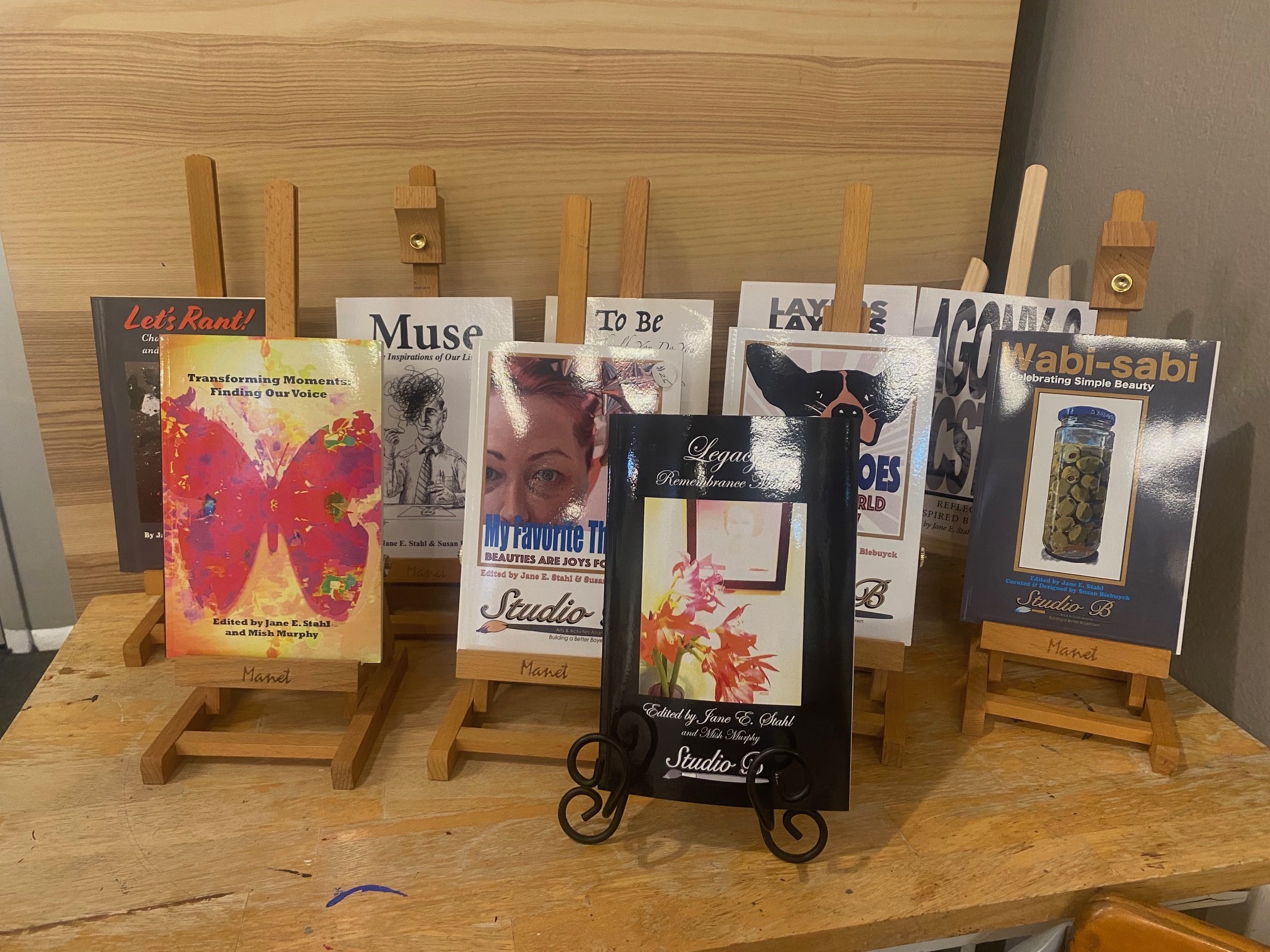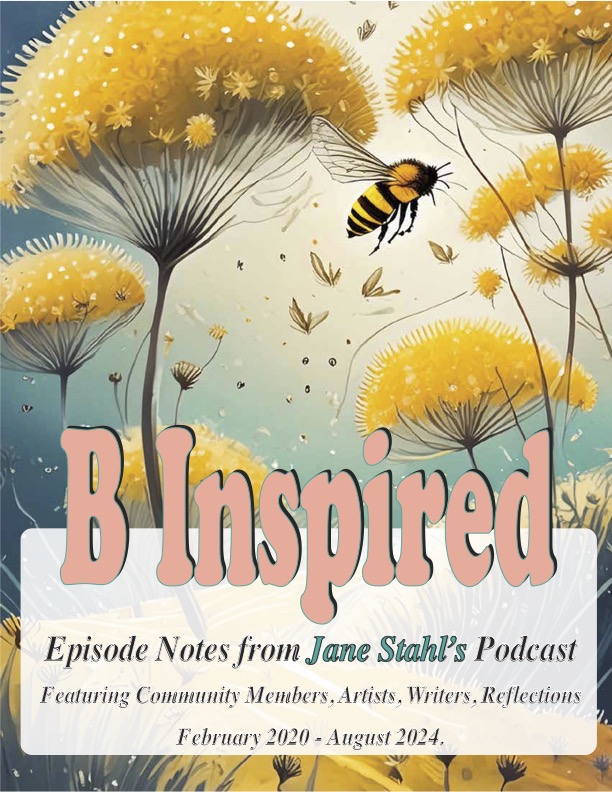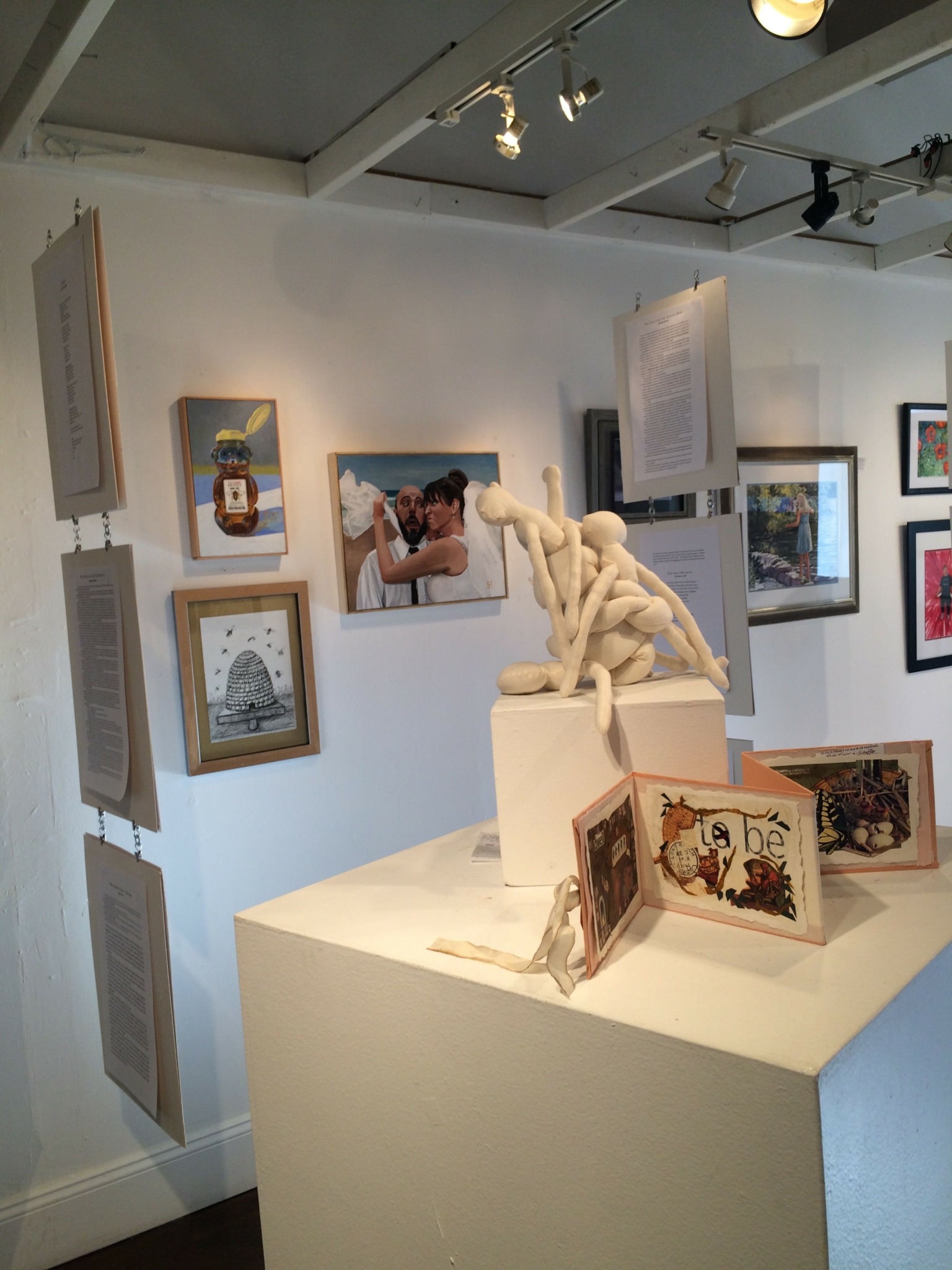Alright – so today we’ve got the honor of introducing you to Jane Stahl. We think you’ll enjoy our conversation, we’ve shared it below.
Jane, appreciate you joining us today. Alright – so having the idea is one thing, but going from idea to execution is where countless people drop the ball. Can you talk to us about your journey from idea to execution?
“How charming!” I smiled every time I came up out of the Metro in Washington, D.C. and saw one of the elephant and donkey sculptures on the street–whimsically decorated sculptures as part of the public art project titled “Party Animals.” My husband, a graphic arts and marketing professional, had introduced me to Chicago’s “Cow Parade” a few months earlier during a shopping trip in which the Museum Store featured a collection of ceramic collectables fashioned after the life-sized sculptures in Chicago. A year later, during a return trip to Washington, I purchased the book about the project that inspired me further. In the introduction, the author described how the project had brought together people from all manner of occupations and interests, of all ages who otherwise would never had known one another to work together, to learn more about one another, to understand and appreciate one another. The project had spurred a sense of unity in a city known at the time as the “murder capital of the world.” My own small town was experiencing disturbing fractiousness; I was working as a public school teacher to try to inspire community-building–working to bring the community into the schools and the schools into the community, for example, to disarm complaints and misunderstandings that had developed between the school and general learning community. Working together on a fun and artistic project seemed like a perfect way to inspire unity in our community. And so, when I returned home, I asked my husband if we might initiate a similar public art project–sculptures of bears, the high school’s mascot. He asked if I understood how expensive such a project would be and allowed me to know our small town could not finance such an endeavor. Discouraged, I went to school, figuring the idea had no “legs.” Until later that afternoon. My husband had spent his day researching the possibility of the idea; and by the time I returned home, he had located a fabricator to produce bear sculptures, calculated costs, and begun to envision how the project might be actualized. My job, he said was to query “my people” at school to see if they could support the project. His job was to do the same with the business leaders in the community to see if they might support the project through sponsoring the sculptures. Serendipitously, when I returned to school the next morning, I was greeted by our Pupil Services Director who knew I often requested funds for assorted projects. He saw me across the room and asked if I had any projects in mind because he had secured some grant funding that needed to be spent within the month for efforts where students and community members would work together in some fashion. The idea suddenly became a reality, and the rest, as they say, is history. In the next month, we had ordered two prototype sculptures; students and teachers were busy designing and decorating them; a committee of community volunteers, non-profit leaders, business owners, students, artists, and teachers made plans to solicit sponsors for the sculptures and artists, students, and community members to decorate them. The chamber of commerce allowed us to introduce the project at the community’s annual progress event. I formed a team of students to call on local business owners to describe the project and solicit their sponsorship. The students made cold calls, gave presentations, created promotional material, attended meetings of community, civic and social clubs, met with media, created videos and CD’s, wrote press releases and grant applications, essays for the website about the artists and sponsors –all in efforts to create enthusiasm and understanding about the project. That summer the students and I made phone calls to business owners to make appointments to describe the project. We had a list of businesses and passed the phone around–each taking a turn. We met in my living room on rainy days and in my pool when the sun shone! And together we met with the business men and women who invited us to describe the project and enlist their sponsorship. It was magical. The business owners loved meeting with the students; the students–initially hesitant to speak to adults about the project–“What if they say ‘No’–developed confidence in their abilities to present and persuade–because they believed in what they were doing and their abilities. By the following year, 35 sculptures decorated by 35 artists, students, and community members, were debuted at the high school’s annual Art Expo. Hundreds of community members attended the debut of the bears that were lined up outside and mixed among the student artwork. Today there are over 90 sculptures around the community promoting businesses, ideas, and honoring individuals. There are so many inspiring stories about the project known as “Bear Fever” throughout its 20-year history. I receive emails and phone calls every week from folks interested in having their own bear or from members of other communities wanting to learn from our experiences. As I tell people: Boyertown, PA, has “Bear Fever,” and we’re not looking for a cure.

Jane, before we move on to more of these sorts of questions, can you take some time to bring our readers up to speed on you and what you do?
I taught English in public school for 35 years. As part of my career, I wrote hundred of press releases for our local media about the exciting, inspiring experiences our students and teachers were initiating. My goal was always to showcase the talents and abilities of my students and fellow colleagues. I wanted the greater learning community to know the “good news” about our school community. I published booklets of student essays to give to parents and distribute around the community–booklets that featured students’ experiences with titles like “Transforming Moments,” “Treasured Moments,” “After the Rain, Rainbows.” I created a student talk show that was broadcast on local cable TV in which a group of students tackled themes each month over three years that, again, allowed the community to know and appreciate the talents and wisdom of the young people their tax dollars were supporting. And I wanted the students to know more about their community and how they could be involved. As a member of community projects and our community’s non-profit organization “Building a Better Boyertown,” I invited my students to participate in community events, to be directly involved in making their community better. Since my retirement from teaching, I’ve established–with a partner–an art gallery and teaching studio over the past 17 years, that exhibits and sells artwork from professional artists; published 10 anthologies of poetry and prose from dozens of area writers, facilitated classes and workshops, hosted groups and individuals to promote the arts and community unity. Each season, activities to engage the community are part of our program. We’ve participated in a project similar to the international “Human Library” in which folks came to share their stories with the community in a speed-dating type event. We mounted a mural to participate in the international project “Before I Die” project. We’ve invited folks to share “Six Words That Define You.” This past season, we asked community members to send in photos of their “pride and joy” and had those photos shown on a TV screen placed the window of the studio. Next year we will ask folks to send in selfies of their favorite Bear Fever bear for our theme “The Three Bears” that will include, as usual, an art exhibit, a collection of poetry and prose from local writers, and fun activities for young and old to work together and have fun. For the past 4 1/2 years I’ve hosted an audio podcast titled “B Inspired” in which I have conversations with people who inspire me and I know will interest and inspire others. For the past 2 years, I’ve co-edited a digital news site titled “The Boyertown Area Expression” in which we feature articles about people, events, and opportunities to inform and inspire community-building. Subscribers to the news site receive emails free each day. People tell me that my passion and enthusiasm are my “brand.” I’m most proud when my former students tell me I inspired them in some way. I want people to know that I know the world can be nasty and mean, but that there are good people doing good things that make a real positive, beautiful difference in the lives of others and their communities. And my aim is always to spread the word about those neighborhood heroes and their efforts.

Is there something you think non-creatives will struggle to understand about your journey as a creative? Maybe you can provide some insight – you never know who might benefit from the enlightenment.
While I’m not sure this story has much to do with being a creative. It may touch on resilience, but it’s one of my favorite stories that became important in the first day that my students and I were doing some “cold calling” around town to solicit sponsorships for sculptures in the Bear Fever project. We were all set. We had “media packets” ready that included a news article, photos, a promotional pin, and contract form. I had conducted the first “ask” and told them it was now their turn. One of my students said, “But what if they say ‘no’?” And that’s when I recalled my job as salesperson for World Book Encyclopedias 30 years prior before I started teaching. The World Book people promised to pay me a sum of money if I saw 100 families over several months to interest them in purchasing the set of encyclopedias. At the time, the money they offered was more than I would be able to earn in most any other type of summer employment. What they explained was that while they would pay me that sum, if I were able to sell more, they’d pay me the commission I earned, and they were certain I’d earn even more than what they committed to pay me, offering that if I believed in my product–which I did–they knew that the product was worthy of investment and would “sell itself.” They encouraged me by saying that their research proved that if I saw 10 families, I’d secure a sale perhaps to one family; and as I saw another 10 families, I’d again secure another sale. I was skeptical but signed on. And I learned that they were right. I exceeded the amount World Book committed to paying me in the commissions I earned from sales. I told the story to my students, assuring them that, yes, folks would say “no,” just as they did to me selling World Books. And that was OK. But if they saw enough people, we’d end up with a successful project. And, indeed, that’s what happened. I hadn’t expected my early experience to come to mind in that moment with my students; but, as they’d testified later, it was a critically important one for them. Accepting a “no” was expected and did not deter, frustrate, or discourage them. They learned to just keep on going, that the important thing was to put their efforts behind something they believed was important. I honestly can’t think of a more important lesson that can serve anyone in any effort. It certainly served me in selling World Book encyclopedias but also in teaching oft-reluctant students over 35 years!

How’d you meet your business partner?
I met Susan, the gallery director of Studio B where I serve as Director of Community Relations through a teaching colleague. Beth, an art teacher in the high school from which I’d just retired, was on sabbatical from teaching where she met Susan at an art center nearby. Beth and Susan decided they wanted to open a gallery and teaching studio. Susan would manage the gallery part and install exhibits of fine art from the art professionals she knew. Beth was to manage the art education side of the facility and develop a menu of classes and workshops, secure instructors to teach the classes, and offer lessons herself. Beth knew I was involved in the community, knew people, and could help her and Susan secure a place for their gallery/studio, so Beth came to me for help. I directed her to a gentleman that I knew would help them. Together they met, found a suitable location, and made plans to open. Paying the rent became the next hurdle; and so the gentleman helping them decided to assist them further by applying for a grant to cover rent for a year. To do that, he asked me to become involved. While he was supportive of Beth’s and Susan’s idea, he didn’t know them well enough to trust they would follow through with the plan. He knew and trusted me from our work together on several other community projects. And so, I became re-involved in their effort, adding my name to the application. And so, work began on getting “Studio B” ready for opening; Beth had returned to teaching, so much of the work went to Susan with the gentleman’s help and my occasional efforts. Studio B’s opening was overwhelmingly successful and well-received from the artists and community. And a list of classes and workshops was distributed to the students in the district’s schools–elementary through senior high. At that point, Beth declared that she needed to step down; she could no longer be involved. Back to teaching full-time and raising a kindergartner and high school senior proved all-consuming. She knew she couldn’t manage the requirements of running a teaching studio in addition. (Her hope had been to sell her home, find a space to operate a teaching studio and quit teaching to run the studio but soon realized that was not an affordable option.) And so, Susan was left with the reality of running the gallery/studio on her own. She was not interested in a solo venture. The gentleman realized that with Beth gone and Susan reluctant, he’d need to return the grant money he’d secured with some penalty regarding the rental contract. At that point, I offered, to step in to be Susan’s partner until she found someone else. That was 17 years ago. Throughout that time, we’ve endeavored to replace me with other artist/teachers; but in the meantime, Susan and I have developed a strong friendship, successful working relationship, and thriving art gallery.
Contact Info:
- Website: www.studiobbb.org, boyertownareaexpression.town.news
- Facebook: Studio B Art Gallery, Boyertown Area Expression
- Other: Studio B Virtual Gallery Group on Facebook; B Inspired podcast found on podcast platforms like Spotify, Apple, Google, Castbox. The Boyertown Area Expression digital news site found on boyertownareaexpression.town.news.

Image Credits
Paul Stahl, Susan Biebuyck, Jane Stahl. Amy Muzopappa


